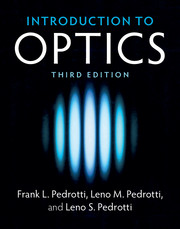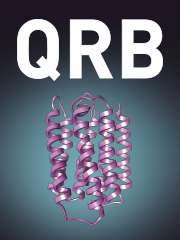Wavefront Shaping for Biomedical Imaging
Part of Advances in Microscopy and Microanalysis
- Editors:
- Joel Kubby, University of California, Santa Cruz
- Sylvain Gigan, Sorbonne Université and Laboratoire Kastler-Brossel
- Meng Cui, Purdue University, Indiana
- Date Published: June 2019
- availability: Available
- format: Hardback
- isbn: 9781107124127
Hardback
Other available formats:
eBook
Looking for an inspection copy?
Please email [email protected] to enquire about an inspection copy of this book
-
Learn about the theory, techniques and applications of wavefront shaping in biomedical imaging using this unique text. With authoritative contributions from researchers who are defining the field, cutting-edge theory is combined with real-world practical examples, experimental data and the latest research trends to provide the first book-level treatment of the subject. It is suitable for both background reading and use in a course, with coverage of essential topics such as adaptive optical microscopy, deep tissue microscopy, time reversal and optical phase conjugation, and tomography. The latest images from the forefront of biomedical imaging are included, and full-colour versions are available in the eBook version. Researchers, practitioners and graduate students in optics, biophotonics, biomedical engineering, and biology who use biomedical imaging tools and are looking to advance their knowledge of the subject will find this an indispensable resource.
Read more- Presents the first book on wavefront shaping for biomedical imaging
- Balances theory with practical examples and discussion of key applications
- Includes contributions from world-leading researchers who are establishing this rapidly evolving field
Reviews & endorsements
'Perusal of this exciting book suggests that combinations of wavefront-shaping techniques with vortex light beams may result in significant advances of deep-tissue imaging of highly scattering live specimens.' Barry R. Masters, Optics and Photonics News
Customer reviews
Not yet reviewed
Be the first to review
Review was not posted due to profanity
×Product details
- Date Published: June 2019
- format: Hardback
- isbn: 9781107124127
- length: 468 pages
- dimensions: 253 x 178 x 26 mm
- weight: 1.09kg
- contains: 244 b/w illus. 24 colour illus.
- availability: Available
Table of Contents
Part I. Adaptive Optical Microscopy for Biological Imaging:
1. Adaptive optical microscopy using image-based wavefront sensing Jacopo Antonello, Débora M. Andrade and Martin J. Booth
2. Adaptive optical microscopy using guide-star based direct wavefront sensing Xiaodong Tao, Oscar Azucena and Joel Kubby
Part II. Deep Tissue Microscopy:
3. Deep tissue fluorescence microscopy Meng Cui
4. Zonal adaptive optical microscopy for deep tissue imaging Cristina Rodrıguez and Na Ji
Part III. Focusing Light through Turbid Media using the Scattering Matrix:
5. Transmission matrix approach to light control in complex media Sylvain Gigan
6. Coupling optical wavefront shaping and photoacoustics Emmanuel Bossy
7. Imaging and controlling light propagation deep within scattering media using time-resolved reflection matrix Youngwoon Choi, Sungsam Kang and Wonshik Choi
Part IV. Focusing Light through Turbid Media using Feedback Optimization:
8. Feedback-based wavefront shaping Ivo M. Vellekoop
9. Focusing light through scattering media using a micro-electro-mechanical systems spatial light modulator Yang Lu and Hari P. Paudel
10. Computer-generated holographic techniques to control light propagating through scattering media using a digital-mirror-device spatial light modulator Antonio M. Caravaca-Aguirre and Rafael Piestun
11. Transmission matrix correlations Roarke Horstmeyer, Ivo M. Vellekoop and Benjamin Judkewitz
Part V. Time Reversal, Optical Phase Conjugation:
12. Reflection matrix approaches in scattering media: from detection to imaging Amaury Badon, Alexandre Aubry and Mathias Fink
13. Wavefront-engineered optical focusing into scattering media using ultrasound- or perturbation-based guide stars: TRUE, TRAP, SEWS, and PAWS Xiao Xu, Cheng Ma, Puxiang Lai and Lihong V. Wang
Part VI. Shaped Beams for Light Sheet Microscopy:
14. Light-sheet microscopy with wavefront shaped beams: looking deeper into objects and increasing image contrast Alexander Rohrbach
15. Shaped beams for light sheet imaging and optical manipulation Tom Vettenburg and Kishan Dholakia
Part VII. Tomography:
16. Incoherent illumination tomography and adaptive optics Peng Xiao, Mathias Fink and A. Claude Boccara
17. Computational adaptive optics for broadband optical interferometric tomography of biological tissue Nathan D. Shemonski, Yuan-Zhi Liu, Fredrick A. South and Stephen A. Boppart.
Sorry, this resource is locked
Please register or sign in to request access. If you are having problems accessing these resources please email [email protected]
Register Sign in» Proceed
You are now leaving the Cambridge University Press website. Your eBook purchase and download will be completed by our partner www.ebooks.com. Please see the permission section of the www.ebooks.com catalogue page for details of the print & copy limits on our eBooks.
Continue ×Are you sure you want to delete your account?
This cannot be undone.
Thank you for your feedback which will help us improve our service.
If you requested a response, we will make sure to get back to you shortly.
×




